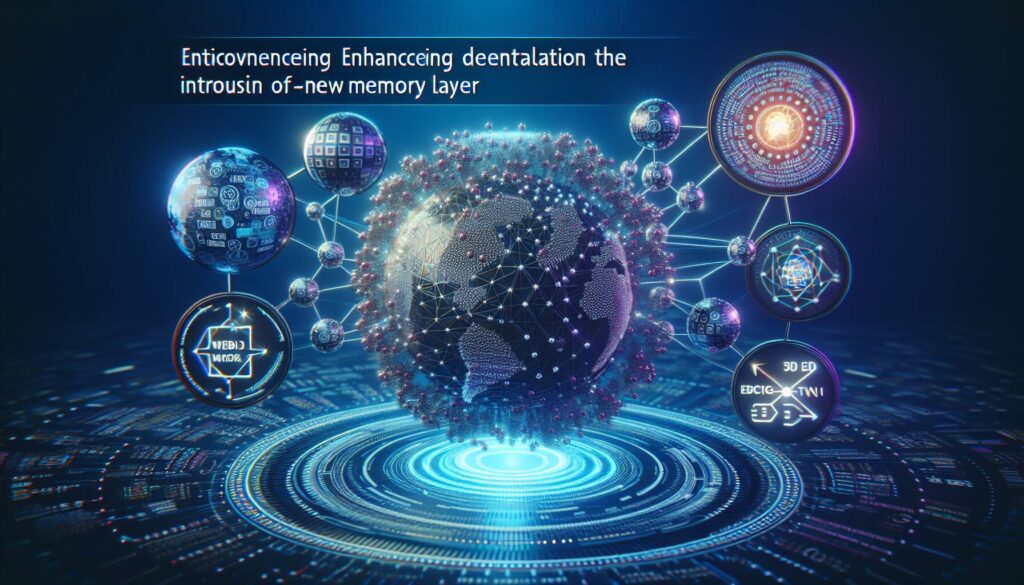As the cryptocurrency landscape evolves, an intriguing challenge has emerged in the Web3 sphere— the pressing need for a memory layer tailored for decentralization. Currently, blockchains operate without the efficient memory systems that underpin conventional computing architectures, leaving a significant gap in what is possible for the next generation of the internet.
This gap is at the heart of discussions led by experts such as Muriel Méard, who will be presenting at Consensus 2025 from May 14-16.
While today’s blockchain technologies share some characteristics with traditional computing, they notably lack an effective memory infrastructure. This absence hampers their performance, making processes sluggish and costly, which ultimately thwarts the potential for mass adoption.
Innovations such as Random Linear Network Coding (RLNC) offer a promising solution to these challenges. This technique, developed over nearly two decades at MIT, is designed to enhance data transmission efficiency in decentralized networks. Unlike traditional gossip-based methods of data sharing that struggle to scale, RLNC enables greater throughput and lower latency, offering a clear path toward a more efficient decentralized memory system.
Imagine a scenario where information flows as smoothly and reliably as items in your own organized closet, rather than being mixed and jumbled like a pile of laundry on your floor. This metaphor encapsulates the vision for what decentralized RAM should achieve, as proposed by researchers at Optimum.
The future of Web3 depends on creating a unified memory layer that not only optimizes data propagation but also solves the immediate challenges of speed, efficiency, and scalability. By integrating RLNC to facilitate real-time data access and management, the hopes of redefining how we interact with computers in a decentralized world become increasingly attainable.

Web3’s Memory Problem and the Future of Decentralization
Web3 currently faces significant challenges related to its memory architecture. Here are the key points regarding this issue and its potential impact:
- The Absence of a Real Memory Layer:
Web3 lacks a dedicated memory system, making it inefficient compared to traditional computing paradigms.
- Current Memory Solutions are Inadequate:
Existing memory approaches are messy and fail to promote efficiency, causing slow transactions and costly storage.
- Importance of Decentralized Memory:
A scalable and efficient memory layer is crucial for the future of decentralized systems, impacting overall performance.
- Advancements in Random Linear Network Coding (RLNC):
RLNC promises to revolutionize data transmission in decentralized networks, increasing speed and reducing latency.
- Comparison to Traditional Computing:
Web3 needs to mimic the functions of traditional RAM to manage data effectively rather than relying on inefficient mempools.
These points highlight the potential for improved efficiency and reliability in decentralized computing systems, which directly impacts developers and users seeking to harness Web3 technology.
Revolutionizing Web3: A New Memory Layer for Decentralization
The technological landscape is rapidly evolving, and recent discussions surrounding the shortcomings of Web3’s memory architecture highlight a critical gap. While there are various developments aimed at improving blockchain performance, none specifically address the core memory infrastructure that is necessary for scaling the decentralized web. The importance of a robust memory layer cannot be overstated—it is the linchpin for achieving high efficiency and reliability in data management for decentralized applications.
Competitive Advantages: The introduction of Random Linear Network Coding (RLNC) for decentralized memory systems stands out as a major advancement. This method has roots in extensive academic research, showcasing proven data coding techniques that not only enhance throughput but also ensure resilience within high-reliability networks. Unlike existing solutions that often provide ad hoc fixes, RLNC offers a systematic approach to memory and data propagation, minimizing issues with redundancy and latency that plague current blockchain technologies. Participants investing in or adopting this new memory infrastructure stand to benefit significantly from improvements in transaction speeds and reduction in costs associated with sluggish data retrieval and storage inefficiencies.
Competitive Disadvantages: However, implementing this groundbreaking approach is not without its challenges. The transition from traditional memory systems to a decentralized RAM (deRAM) could encounter pushback from developers accustomed to current protocols, potentially resulting in a steep learning curve. Moreover, the reliance on a sophisticated coding method may initially limit accessibility for smaller developers or newcomers lacking in technical expertise. There could also be resistance from legacy systems that do not readily integrate with RLNC, preventing a smooth shift towards a more efficient memory layer.
This development is particularly advantageous for blockchain developers, organizations aiming for mass adoption of decentralized applications, and industries looking to leverage the potential of Web3 technologies without the typical bottlenecks. On the other hand, it may present challenges for established players who have built infrastructures around existing memory solutions and could struggle to adapt to the rapid changes demanded by this new paradigm.
In summary, whilst a unified and efficient memory infrastructure for Web3 heralds a more scalable future, the path ahead must navigate technical complexities and educational barriers to unlock its full potential. The debate on how to best implement these innovations will shape the next chapter in the decentralized Internet saga.

















